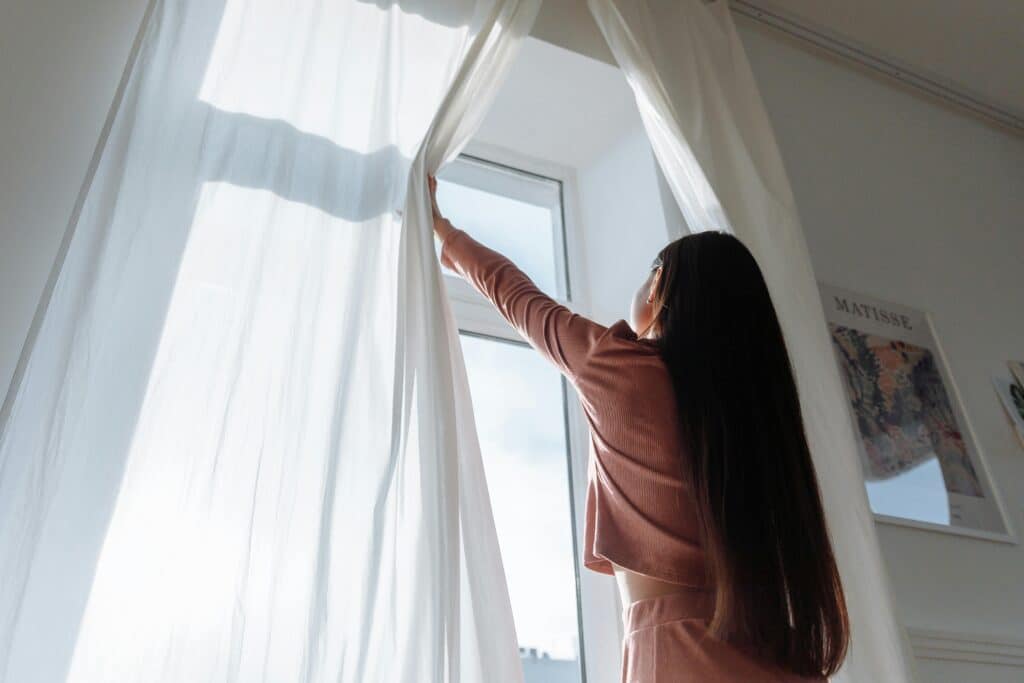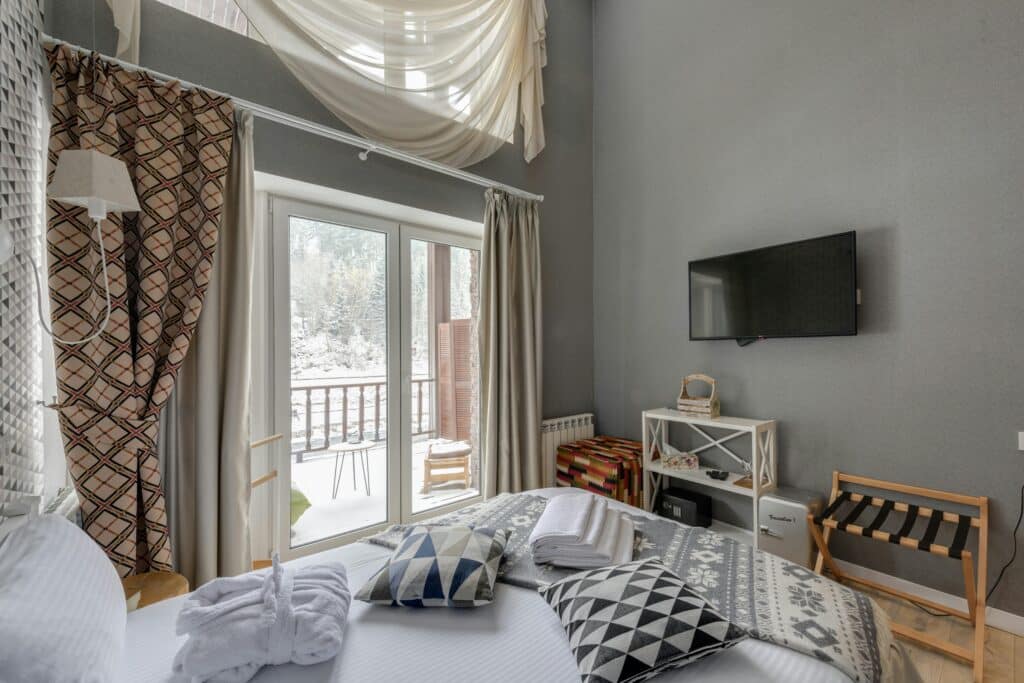Lighting serves as one of the most powerful yet frequently overlooked elements in home design. Beyond its functional purpose of illuminating spaces, thoughtful lighting shapes atmosphere, influences mood, and transforms how we experience our living environments. As seasons change, bringing shifts in natural daylight, temperature, and our daily routines, adapting your home’s lighting can enhance comfort, support wellbeing, and create spaces that feel perfectly attuned to each time of year.
Understanding How Light Affects Our Homes and Wellbeing
Natural daylight varies dramatically throughout the year. British winters offer roughly eight hours of daylight, whilst summer days stretch to sixteen hours or more. These fluctuations affect our circadian rhythms, energy levels, and emotional states. Our homes must compensate for seasonal light variations, providing appropriate illumination that supports our biological needs and lifestyle preferences.
Research consistently demonstrates that lighting quality influences productivity, sleep patterns, and overall mood. Harsh, poorly positioned lighting creates eye strain and fatigue, whilst thoughtfully designed lighting schemes promote alertness when needed and relaxation during evening hours. Understanding these principles allows you to create lighting that actively enhances your daily life rather than merely providing adequate visibility.
Spring: Welcoming Fresh Energy and Natural Light

Embracing Brightness and Clarity
Spring’s lengthening days and increased natural light call for lighting schemes that complement rather than compete with sunshine streaming through windows. This season offers opportunities to reduce artificial lighting during daytime hours whilst ensuring adequate illumination for early mornings and still-dark evenings.
Layer your lighting with brighter task lights for activities requiring concentration—reading, cooking, or detailed work—whilst maintaining softer ambient lighting that doesn’t overwhelm the gentle quality of spring daylight. Cool white bulbs (4000-5000K) mirror spring’s crisp, clear light, creating fresh, energising atmospheres perfect for spring cleaning and renewed productivity.
Highlighting Seasonal Décor
Spring brings fresh flowers, lighter textiles, and décor changes that benefit from strategic highlighting. Adjustable spotlights or picture lights can emphasise seasonal displays, whilst under-cabinet lighting showcases spring greenery or floral arrangements in kitchens and dining areas.
Summer: Maximising Natural Light and Creating Outdoor Ambience
Extending Living Spaces Outdoors
Summer living naturally flows between indoor and outdoor spaces. Garden lighting transforms patios and terraces into functional evening spaces, extending usable hours well beyond sunset. String lights create festive atmospheres for entertaining, whilst path lighting provides safety and subtle ambience.
Consider warm white LEDs (2700-3000K) for outdoor spaces, creating inviting glows that complement summer twilight without harsh brightness. Solar-powered options offer sustainable solutions for areas where electrical installation proves challenging.
Managing Indoor Light Levels
Paradoxically, summer sometimes requires reducing indoor lighting. Long daylight hours mean homes receive abundant natural light, making heavy artificial lighting unnecessary and potentially uncomfortable. Dimmer switches offer excellent control, allowing precise adjustment throughout summer’s extended twilight periods.
For comprehensive guidance on adapting your lighting as conditions change, exploring strategies for seasonal lighting for your home provides valuable insights into creating harmonious illumination year-round.
Autumn: Creating Warmth as Days Shorten
Transitioning to Cosier Atmospheres
Autumn’s rapidly shortening days require thoughtful lighting adjustments. As natural light diminishes, artificial lighting assumes greater importance in maintaining comfortable, inviting spaces. This season marks an ideal time to evaluate your lighting scheme, ensuring adequate illumination without excessive energy consumption throughout darker months ahead.
Warm lighting (2700K and below) creates cosy, welcoming atmospheres perfectly suited to autumn evenings. Table lamps and floor lamps provide flexible lighting that can be positioned wherever needed, creating pools of warm light that invite relaxation and comfort.
Layering for Functionality and Atmosphere
Autumn’s varied activities—from morning work sessions to evening gatherings—demand versatile lighting. Implement layered schemes combining ambient ceiling lights, task lighting for specific activities, and accent lighting highlighting seasonal décor. This approach provides appropriate illumination for any activity whilst creating visual interest and depth.
Winter: Compensating for Limited Daylight

Combating Seasonal Darkness
Winter’s limited daylight significantly impacts mood and energy levels. Strategic lighting becomes essential for maintaining wellbeing during these challenging months. Bright lighting during morning hours helps regulate circadian rhythms, promoting alertness and combating seasonal affective disorder symptoms.
Consider investing in daylight-simulation bulbs (5000-6500K) for areas where you spend mornings, providing bright, energising light that mimics natural daylight. However, transition to warmer lighting as evening approaches, signalling to your body that day is ending and supporting healthy sleep patterns.
Creating Intimate, Comfortable Spaces
Winter evenings call for lighting that promotes relaxation and comfort. Candles, whilst requiring careful supervision, provide unmatched warmth and ambience. LED candles offer safer alternatives that create similar effects without fire risks. Fireplace lighting—whether from actual fires or electric alternatives—creates focal points that gather family members whilst providing pleasant ambient illumination.
Concentrated lighting around seating areas creates intimate zones within larger spaces, making rooms feel cosier without excessive energy consumption illuminating entire areas.
Practical Considerations for Year-Round Lighting Success
Smart Lighting Technology
Modern smart bulbs and systems offer unprecedented control over your home’s lighting. Programme schedules that automatically adjust throughout seasons, changing colour temperature and brightness based on time of day and year. Voice control and smartphone apps provide convenient adjustment without leaving your seat.
These systems typically offer energy monitoring, helping you understand consumption patterns and identify opportunities for efficiency improvements.
Energy Efficiency and Sustainability
LED technology has revolutionised home lighting, offering dramatic energy savings compared to traditional incandescent or halogen bulbs. Quality LEDs last 15-25 years under typical usage, eliminating frequent replacement costs whilst reducing environmental impact.
When selecting bulbs, consider lumens (brightness) rather than wattage, choosing appropriate output for each application. Over-lighting wastes energy whilst creating uncomfortable glare, whilst insufficient lighting strains eyes and limits functionality.
Maintenance and Bulb Selection
Regular maintenance ensures optimal performance. Clean light fixtures and lampshades quarterly—accumulated dust significantly reduces light output. Replace bulbs proactively rather than waiting for failure, maintaining consistent light quality throughout your home.
Standardise bulb types where possible, simplifying replacement and ensuring consistent light quality across spaces. However, don’t hesitate to use different colour temperatures in different rooms based on their primary purposes and seasonal requirements.
FAQ Section
How can I make my home feel brighter during winter without increasing energy costs?
Maximise natural light by keeping windows clean and removing heavy curtains during daylight hours. Use mirrors strategically to reflect available light throughout rooms. Choose warm white LEDs that feel bright and welcoming whilst consuming minimal energy. Focus lighting where you spend time rather than illuminating entire spaces unnecessarily.
Should I use the same lighting throughout my home?
Different rooms serve different purposes and benefit from tailored lighting approaches. Kitchens require bright, cool task lighting for food preparation, whilst bedrooms need softer, warmer lighting promoting relaxation. Living areas benefit from flexible layered schemes supporting varied activities. Consistency in style or finish creates visual cohesion without requiring identical lighting types.
Are smart bulbs worth the investment?
Smart bulbs cost more initially but offer considerable value through convenience, energy monitoring, and programmability. The ability to adjust colour temperature and brightness seasonally without purchasing multiple bulbs justifies the premium for many households. However, basic LED bulbs provide excellent energy efficiency if smart features don’t appeal to you.
How do I choose the right colour temperature?
Consider the room’s purpose and desired atmosphere. Warm white (2700-3000K) suits living rooms, bedrooms, and dining areas where relaxation is paramount. Neutral white (3500-4000K) works well in bathrooms and hallways. Cool white (4000-5000K) benefits task-oriented spaces like kitchens, home offices, and workshops. You can adjust seasonally, using slightly warmer tones in winter and cooler ones in summer.
Can lighting really affect my mood and sleep?
Absolutely. Research confirms that light exposure significantly influences circadian rhythms, mood, and sleep quality. Bright, cool-toned light in mornings promotes alertness, whilst warm, dim lighting in evenings signals your body to prepare for sleep. Exposure to bright screens or lights before bed disrupts sleep patterns, making thoughtful evening lighting choices particularly important for wellbeing.
Conclusion
Adapting your home’s lighting throughout the seasons creates living environments that support your wellbeing, enhance comfort, and respond thoughtfully to changing natural conditions. By understanding how light affects mood and functionality, implementing flexible lighting schemes, and making strategic seasonal adjustments, you transform your home into a space that feels perfectly attuned to each time of year. Whether compensating for winter’s darkness, celebrating summer’s abundance, or creating cosy autumn atmospheres, thoughtful lighting choices represent simple yet powerful improvements that enhance daily life whilst often reducing energy consumption. As you consider your home’s lighting, remember that small adjustments—a warmer bulb here, an additional lamp there—can dramatically transform how you experience your living spaces throughout the changing seasons.

